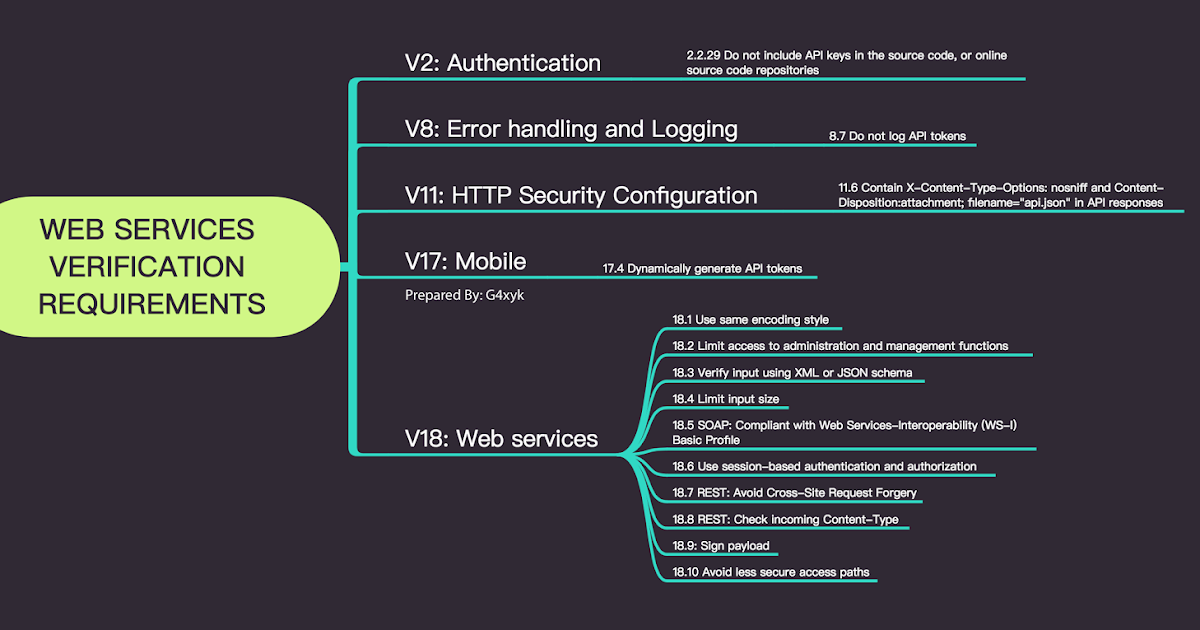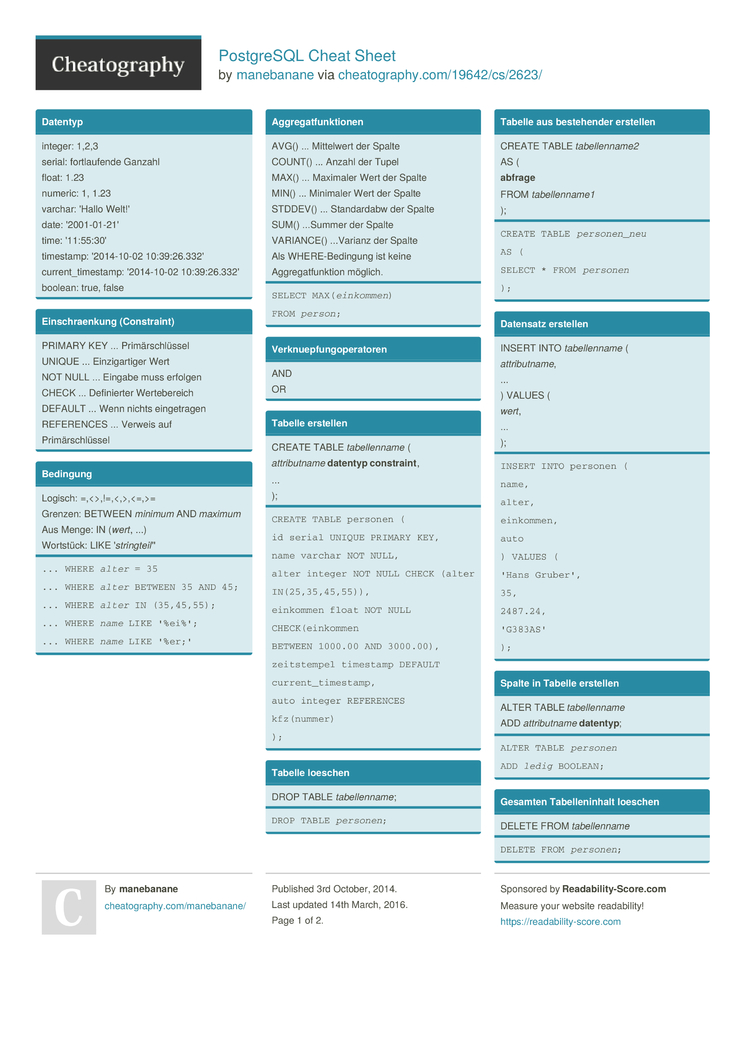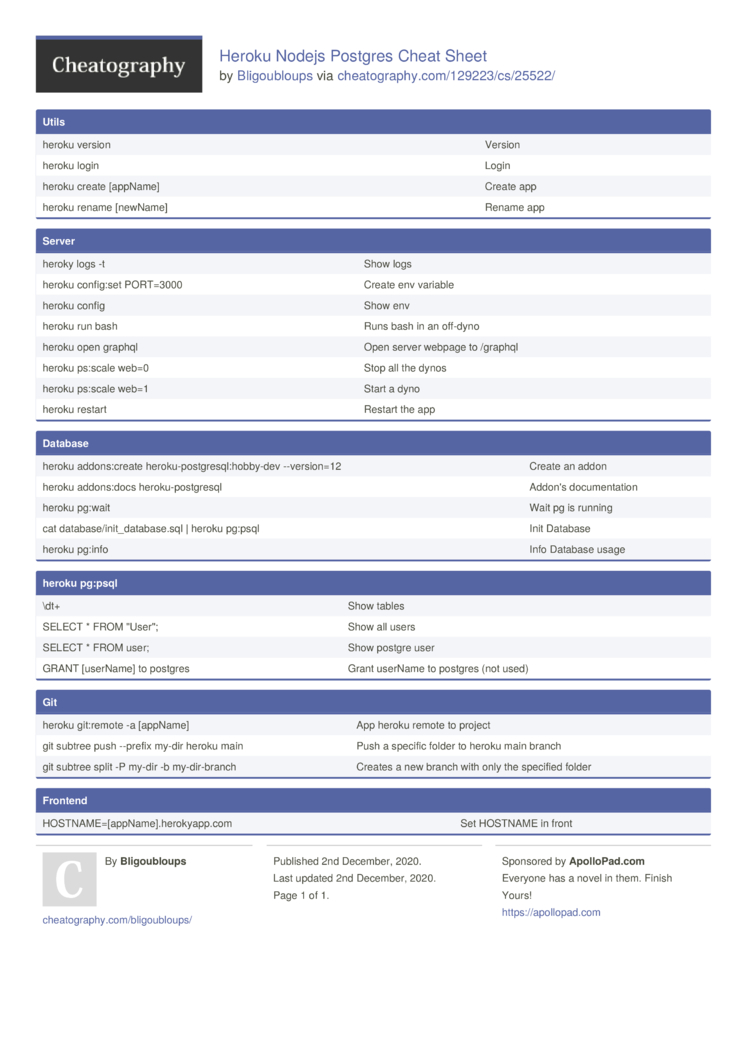- Postgresql Cheat Sheet Pentest
- Postgresql Commands Cheat Sheet
- Postgresql Cheat Sheet Pdf
- Postgresql Sql Cheat Sheet
Introduction to the PostgreSQL cheat sheet
If you’re using PostgreSQL to store and query your data, you might find yourself needing to look up the syntax of some common statements and queries. There’s no need to go searching for this information– we’ve rounded up some of the most common SQL statements and queries and created a PostgreSQL cheat sheet for you. This handy reference guide will help you perform many common PostgreSQL tasks using the psql command-line interface.
Postgres Cheatsheet created by your friends at Timescale. The PostgreSQL cheat sheet provides you with the common PostgreSQL commands and statements that enable you to work with PostgreSQL quickly and effectively. Sudo -u postgres psql Create a new user for PostgreSQL and assign a password to it. Since it is not considered a good practice to persist your data in PostgreSQL through the default user i.e.
Note that SQL statements in psql must terminate with a semicolon. This syntax lets Postgres knows where a statement ends; otherwise, PostgreSQL will interpret the next line as an extension of that same command.
Another thing to keep in mind when constructing SQL statements is that PostgreSQL strings must always be enclosed using single quotation marks (e.g. 'string here'). Using double quotes will result in a syntax error.
You can press CTRL+C if you’d like to escape a command or exit from the results of a command.
Prerequisites to using PostgreSQL SQL commands in psql

Before we proceed with our PostgreSQL cheat sheet, let’s review a few prerequisites that are necessary to get the most out of this article. You should have PostgreSQL installed, and you’ll need to have a PostgreSQL role with access to a database in order to execute the SQL statement examples found in this article. You’ll also need to use psql, the command-line interface for PostgreSQL. Use the psql -V command to find out which version of the interface is installed on your machine.
Accessing PostgreSQL using the ‘psql’ command line interface
We can use the following syntax to access a PostgreSQL database on a localhost server. The command should be executed using the psql command-line interface:
psql postgres |
The command shown above will try to connect to the PostgreSQL database named postgres.
You can also use the alternative syntax shown below to connect to PostgreSQL using a username, host and database name:
psql -U some_username -h 127.0.0.1 -d some_database |
NOTE: Notice that a few different flags are used in this command syntax. The -U flag represents the Postgres username, and the -h flag indicates the host domain or IP address. The -d flag is used to provide the database name. If only one parameter is supplied, psql will assume it is the database name.
PostgreSQL cheat sheet of useful SQL queries and commands
The following section provides an overview of some of the most common SQL commands used to manage and alter Postgres roles, indexes and tables.
PostgreSQL cheat sheet to manage the roles and users
In Postgres, a role is the entity that is granted privileges to access and modify database and table data. A role can be either a user or a group. You can create a new role using the following syntax:
To add a username and password to the new role, simply use the command:
CREATEROLE new_role NOINHERIT LOGIN PASSWORD 'mYpAsSwOrDyO!'; |
We can assign a new role to our current psql session:

The last command we’ll review in this section is used to create a user with an encrypted password:
CREATEUSER new_user WITH ENCRYPTED PASSWORD 'mYpAsSwOrDyO!'; |
Grant privileges to a Postgres user or role
Now that we know how to create a user or role, let’s discuss how to grant a user privileges. The following command uses the GRANT CONNECT keyword to grant a Postgres user access to a specific database:
Here’s how we can grant all privileges for public tables to the same user:
GRANTALL PRIVILEGES ONALLTABLES IN SCHEMA public TO new_user; |
Revoke all privileges for a PostgreSQL user or role
Not only can you grant privileges to a user, but you can also take them away. The following command will reverse the one shown above and REVOKEall of a role’s privileges for all tables:
REVOKEALL PRIVILEGES ONALLTABLES IN SCHEMA public FROM new_user; |
The same can be done for database privileges:
REVOKEALL PRIVILEGES ONDATABASE some_db FROM new_user; |
Last but not least, let’s look at an example of how to revoke database ownership for the user:
Postgresql Cheat Sheet Pentest

PostgreSQL cheat sheet commands for table views
In this section, we’ll look at some commands related to views. A PostgreSQL VIEW is a way of logically organizing data that’s meant to represent the column data of tables.
The following example uses the CREATE VIEW SQL keywords. It also uses the AS keyword to give the view database object a name:
CREATEVIEW some_view AS col_data; |
The next example creates a view object that consists of the column names col1 and col2:
Postgresql Commands Cheat Sheet
CREATEVIEW some_view(col1, col2) ASSELECT col1, col2 FROM some_table; |
If you need to DROP, or delete, a view from your database, here’s how to do it:
PostgreSQL cheat sheet commands for indices
In this section, we’ll look at some common commands used to manage indexes. To create an index, we use the following command:
CREATEINDEX some_index ON some_table(col_name, second_col); |
The DROP INDEX command is used to remove a specified index from a table:
PostgreSQL cheat sheet commands for Triggers
In SQL, a TRIGGER is a callback or function that will automatically execute a SQL statement when a certain event occurs. The basic structure of a PostgreSQL trigger is shown below:
CREATETRIGGER some_trigger [WHEN EVENT]ON some_table [TRIGGERTYPE]EXECUTE stored_procedure; |
NOTE: The WHEN EVENT and TRIGGER TYPE keywords are optional.
PostgreSQL cheat sheet commands for tables

The syntax for the SQL command used to create a new table looks like the following:
CREATETABLE some_table (some_column +DATATYPE+ CONSTRAINTS [OPTIONAL]); |
Let’s look at an example of how you can use the CREATE TABLE keyword to create a Postgres table comprised of a string column and an integer column:
Postgresql Cheat Sheet Pdf
CREATETABLE some_table ( id INTPRIMARYKEY, some_str VARCHAR(30), some_int INT ); |
NOTE: Our example contains the PRIMARY KEY constraint, which tells Postgres to make the value of that particular column the main identifying information for the record.
If you need to rename a Postgres table, you can use the ALTER TABLE and RENAME commands:
To drop a table and all of its dependent objects:

DROPTABLE[IFEXISTS] some_table CASCADE; |
To add a new column to an existing table, use the following command:
ALTERTABLE some_table ADDCOLUMN some_column DATATYPE; |
To rename a specific column in an existing table, use the command shown below:
ALTERTABLE some_table RENAME some_column TO some_column; |
To drop a column from a table, use the following command:
To remove the SQL primary key constraint from a table, we use the ALTER TABLE and DROP CONSTRAINT commands:
ALTERTABLE some_table DROPCONSTRAINT primary_key_constraint_name; |
NOTE: Some common examples of a PRIMARY KEY constraint would be NOT NULL or UNIQUE.
Conclusion to the PostgreSQL cheat sheet
Postgresql Sql Cheat Sheet
If you’re just getting started with PostgreSQL, it may seem like there’s a lot to learn; however, having a PostgreSQL cheat sheet handy can make it easier to perform everyday database tasks. In this article, we covered many of the common commands and queries used in PostgreSQL. In the next installment of this two-part series, we’ll pick up where we left off and look at some more examples of PostgreSQL syntax.
